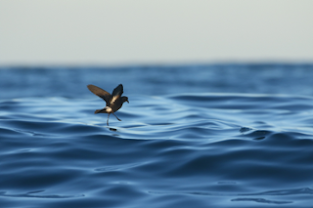Keogan, K., Daunt, F. [...], Igual, J.M. [...], Sanz-Aguilar, A. [...], Lewis, S. 2018. Global phenological insensitivity to shifting ocean temperatures among seabirds. Nature Climatre Change 8,313–318 doi:10.1038/s41558-018-0115-z
 |
| Photo: from CEHseabirds |
Abstract: Reproductive timing in many taxa plays a key role in determining breeding productivity, and is often sensitive to climatic conditions.
Current climate change may alter the timing of breeding at different
rates across trophic levels, potentially resulting in temporal mismatch
between the resource requirements of predators and their prey.
This is of particular concern for higher-trophic-level organisms, whose
longer generation times confer a lower rate of evolutionary rescue than
primary producers or consumers. However, the disconnection between studies of ecological change in
marine systems makes it difficult to detect general changes in the
timing of reproduction.
Here, we use a comprehensive meta-analysis of 209 phenological time
series from 145 breeding populations to show that, on average, seabird
populations worldwide have not adjusted their breeding seasons over time
(−0.020 days yr
−1) or in response to sea surface temperature (SST) (−0.272 days °C
−1)
between 1952 and 2015. However, marked between-year variation in timing
observed in resident species and some Pelecaniformes and Suliformes
(cormorants, gannets and boobies) may imply that timing, in some cases,
is affected by unmeasured environmental conditions. This limited
temperature-mediated plasticity of reproductive timing in seabirds
potentially makes these top predators highly vulnerable to future
mismatch with lower-trophic-level resources.





No comments:
Post a Comment
Note: only a member of this blog may post a comment.